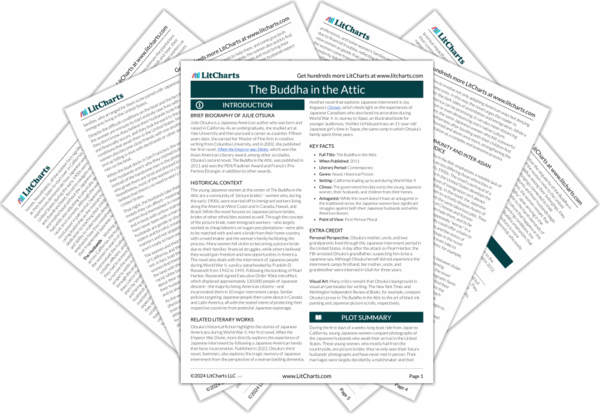Despite the Japanese American children’s efforts to distance themselves from Japanese culture in their earlier adolescence, the older children’s decision to return home to help their parents reveals that they still love and care for their families even if they were once ashamed of their upbringing and cultural background. At the same time, the division between the Japanese American and white American communities is more clear-cut than ever. As the white townsfolk swoop in to purchase their Japanese neighbors’ furniture, they don’t seem to sympathize at all with their struggles, instead viewing this as an opportunity to refurnish their homes.
